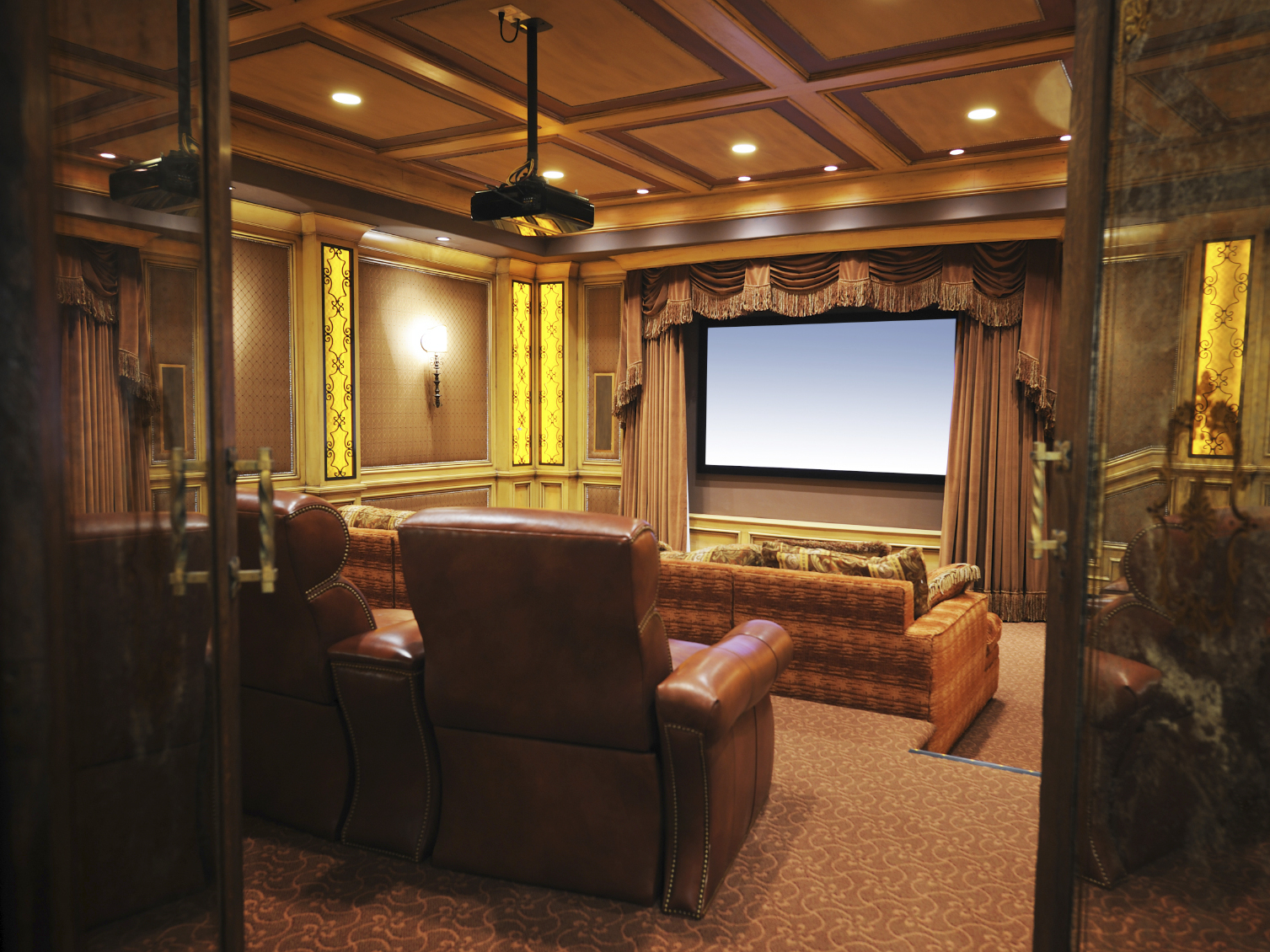

Another is sound diffusion which redirects and breaks up sound patterns but doesn’t remove the sound entirely.įor more information on acoustics and soundproofing for a home theater, please see our articles, How to Sound Treat a Room and How to Soundproof a Home Theater. Note that sound absorption is only one acoustic treatment. If you don’t want to hear your child practice the violin, soundproof the walls absorption will make it more difficult for the musician to hear the true sound. They are not soundproofing.Īdditionally, sound absorption panels are not recommended for music rooms where the reverberation enhances sound creation and enjoyment. Plus, they will improve the listening accuracy in all those spaces.Īcoustic panels are great for improving sound within a room, but they don’t significantly decrease the movement of sound into other spaces.
Diy media room movie#
Sound absorption panels will improve the sound clarity of surround sound for movie and sports viewing, and video gaming.ĭecrease the noise and chatter in living rooms, bars, libraries, museums, and restaurants. They are ideal for Home Theaters, Home Recording or Mixing Studios. They reduce reverberation and echo to give better sound listening quality. What Are Sound Absorption Panels Used For?Īcoustic panels absorb sound. The sound you want to hear is being distorted by the noise around you. If you sit 8-feet in front of the sound source, and there is a wall 2-feet behind you, the speed of sound does the rest. Sound that doesn’t hit a panel reflects off the surface. The kinetic energy dissipates into the room without creating sound reverberation. Sound waves that encounter an acoustic panel create a vibration within the material which turns the sound energy into kinetic energy or heat. Other panels may have a perforated wood face to control sound feedback. Most are fabric covered and can blend or complement a room, or be covered with a cloth artwork or a photo print to decorate the room.
Diy media room free#
The panels can be free standing, wall or ceiling mounted. The foam absorbs down to frequencies of 500 Hz, while the fiberglass or stone wool absorbs down to 100 Hz.

Sound panels are often made of acoustic foam or sound insulation. Panels absorb mid to high frequencies and soften the return noise for cleaner sound enjoyment. The more multi-directional the sound producing system, the more bounce back noise being produced. How to Build Acoustic Panels for Your Home Studio How Much Do DIY Sound Panels Cost? Conclusion What are Acoustic Panels?Īcoustic panels control the extra sound reverberating in a room. Acoustic Panels Built From Steel Studs 21. DIY Ceiling Acoustic Panels Built with Kreg 20. How to Build an Easy DIY Acoustic Panel 18. How To Build Cheap Acoustic Sound Absorbers - 30$ DIY IKEA Hack 17. Frameless Acoustic Panels With A Low Budget 16.
Diy media room pro#
DIY Pro Acoustic Panels with Frame from MDF 13. Making Acoustic Panels for Recording Studio or Home Theatre 12. Building a Frameless Broadband Absorber Panels 11. Decorative Acoustic Panels From Canva 10. Make Acoustic Panels for Your Recording Studio 5. How to Make High Performance Sound Absorption Panels for $5 4. How to Build a Sound Absorbing Panel in 5 Easy Steps 3.

What are Acoustic Panels? How Do Sound Insulating Panels Work? What Are Sound Absorption Panels Used For? Best Acoustic Panel Core Material Best Fabric for Acoustic Panels How Thick Should Acoustic Panels Be? How to Make Acoustic Panels Step 1: Plan Your Build Step 2: Select Sound Absorbing Material Step 3: Choose and Prepare an Acoustically Transparent Fabric Step 4: Build Acoustic Panel Frame Step 5: Wrap the Panel in Fabric Step 6: Mount the Panel to Wall or Ceiling Ideas on How to Make DIY Acoustic Panels 1.


 0 kommentar(er)
0 kommentar(er)
